Pentax ME Super Storm Drain Tests
A few days ago I bought a Pentax ME Super. I already have a couple of MEs which are automatic aperture priority SLRs with no control or even indication of shutter speed. The ME Super has a fully manual mode so you can actually see what shutter speed you are using, even if you choose to use automatic mode. To me this is an important difference so I was very pleased to get the Super.
I officially have a crush on this camera – it is really quite small, it meters well, the ergonomics are very familiar since I was a Spotmatic (and K1000) user for years and the controls are laid out in a very similar way, it is solid – not plastic, the view finder is very bright with good magnification. A main difference is that the shutter speeds are set with two buttons on top of the camera, but I found I adapted to this feature almost immediately. Pentax lenses are very good and I already have accumulated several K-mount lenses, including a 28/2.8, 50/2, 50/1.4, 135/3.5 and a couple of longer zooms such as a nice 80-200/4.5.
I am not sure what it is about buying these MEs, but I have been particularly lucky in my purchases. Most of my ME kit came in a single deal for $50 (written about here), and now I have added this one for only $15 including a 50mm lens, case, flash and manuals, all in very nice condition. Altogether I have 3 ME or ME Super bodies, about 8 Pentax K-mount lenses, a very good flash and another small flash as well as many filters and accessories all for about $90. Now that I have a Super, I will likely get rid of an ME body, or even both of them, which should cover all the costs of these purchases.
When testing the camera I did repeat a mistake I have made quite often – I used expired film with an uncertain history. This just adds too many variables to a camera test. I did however pay close attention to the meter readings and they were totally in line with Sunny 16 expectations as well as to another camera with accurate meter, so I am confident the meter works well. Today’s post is with a roll of Superia X-TRA 400 (12! exposure roll) that expired in 2005. I shot it at 200 since I have found that Superia stands up to time fairly well and often needs no exposure compensation even after a decade. Turns out that this one had lasted less well and I should have metered it at 100 ISO. This was also the case with a second roll of film that I used for testing – a 24 frame Kodak Royal Gold 400 expired in 2004, from the same source so probably stored together. However, when I did do some extra exposure compensation, I found that film was still viable, which is a relief since I have a few more rolls. I had to use Lightroom to get the most out of these images. Even so, I am sure the metering was good, and I can see the lenses I used are very sharp. This roll was shot through the 50/1.4, the Kodak roll I shot with the 28/2.8 – both seem to be equally good lenses.
I will be shoot with this camera more – the size is great, and it is a worthy camera. More images from these tests coming soon.
.
.
Pentax ME Super, SMC Pentax 50/1.4 lens,
Fuji Superia X-TRA 400, metered at 200 ISO, expired 08-2005. Film developed & scanned commercially.
.
.





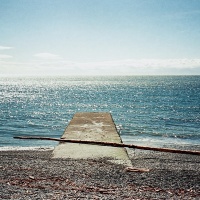
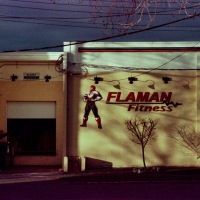
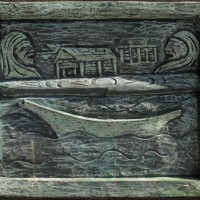

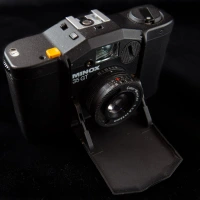
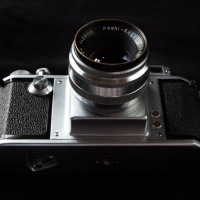


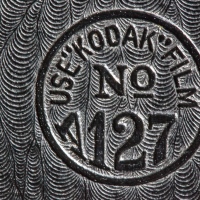


The ME Super is one of my personal favorites. Small form, lightweight, and always gives me great shots.
LikeLiked by 1 person
Hi Shaun – totally agree. I am continuing to shoot with it. I need to expand to include some of my other lenses but they are larger and detract from the pleasure that comes from the size of the ME Super.
LikeLike
I’ve done the same thing with testing too often – tried to test a new camera, lens and expired film all at once so there have been too many variables to ascertain what was good and what wasn’t. I’ve likely sold on kit that was perfectly good but gave poor results because of a long expired film. This was a big downside for me for keeping trying so many different cameras/lenses/films!
LikeLiked by 1 person
Hi Dan – I know I have done that too – there are cameras I have dismissed out of hand, only to realise later it was the film. I have continued testing the ME Super and it performs very well regardless of the film.
LikeLike
Pingback: Recommended reading | Down the Road
Pingback: Pumpkin Test | burnt embers
p.s. – I like the 2nd & 4th shots a lot – the 2nd has a nice feeling of intimacy because of the gull and the little bright reflections here and there, the 4th has that gorgeous shading in the distance.
LikeLiked by 1 person
Thank you Lynn – I think I like the first one the best, for the mood. I do like the second one too – I’m especially amused by the blotch of red lens flare right over the seagull a bit like a halo.
LikeLike
Sounds like you’re having a great time with the Pentax’s. A close friend had one in the late 60’s and he so loved that camera! I don’t know which it was, but I know it was good. Speaking of the lens you used, I pulled out the one vintage lens I own yesterday, a Super Takumar 50mm f1.8, which has a slight golden glow due to radioactive coatings – but I like that, especially in the fall and spring for outdoors. I got some really nice photos – the leaves are looking great here right now, and you can get nice effects with that lens. I’ll post them probably in a week or two.
LikeLiked by 1 person
Late 60’s would almost certainly have been a Spotmatic (my only cameras for decades) unless it was medium format. I have to say that this camera is better than the Spotmatics – not only because it is smaller, it is easier to focus (split screen focus vs shimmering dots), it has much better light metering, has an auto mode if wanted, and a few other improvements. In most of the same ways it is better than the K1000 series (I used them at work a lot) too, but uses all the same lenses.
Those 50/1.8 Super Takumars are very good lenses – I have one or two of them, both screw mount lenses, neither has the yellowing though. I do have a 50/1.4 which has serious thorium yellowing. Many of these lenses have a yellow coating, visible at certain angles, but it is not the coating that is the problem. The thorium is in one (or more?) of the rear glass elements and causes the glass itself to yellow. If you ever want to get rid of it, you just need to expose it to UV light for an extended period, or even just bright light from some reports, though one needs to be careful not to concentrate the sun’s rays and burn the windowsill/house.
Sounds like you don’t want to be rid of the yellow. I am going to treat my 50/1.4. I did try it with black and white film assuming it would function like a built-in yellow filter but without any great result. I am losing at least a stop of light due to the yellowing, perhaps even two stops, so it is defeating the purpose of a 1.4 lens. Also, it is a lens that my son wants to use for video (it is highly regarded in the video community) but is way too yellow to leave a nice effect.
LikeLike
I’ve read about exposing the lens to bright light, but I’m (so far) tempted to leave it as is. I suppose the degree of yellowing is different from lens to lens, and maybe mine has less of it than the one you’re talking about – probably. It’s interesting to hear that the lens is popular in the video world. I’d use it more if it wasn’t so hard to focus – I can’t tell when it’s really in focus on the screen (and certainly can’t tell in the viewfinder) on my camera – the OM D1. I get used to lenses made for the camera with great sharpness, and I think what I need to do is let go of that, and adjust. 🙂
LikeLiked by 1 person
They do have the depth of field marks in the lens so often you can get good focus with ca f8 or f11 and guessing the distance. I hate focussing video on the screen – it’s really tough. I have considered getting an eye piece thingy (sorry to get all technical) to help but don’t shoot enough video to justify it. Mostly I prefocus with a lots of depth and hope for the best. Wide angle lenses help a lot too.
LikeLike
I’m a giant fan of the ME but haven’t bought a Super body yet. One day…
Nice work with yours!
LikeLiked by 1 person
Hi Jim – thanks so much. I like the ME, but somehow we have not bonded. But that looks to be happening with the Super.
LikeLike